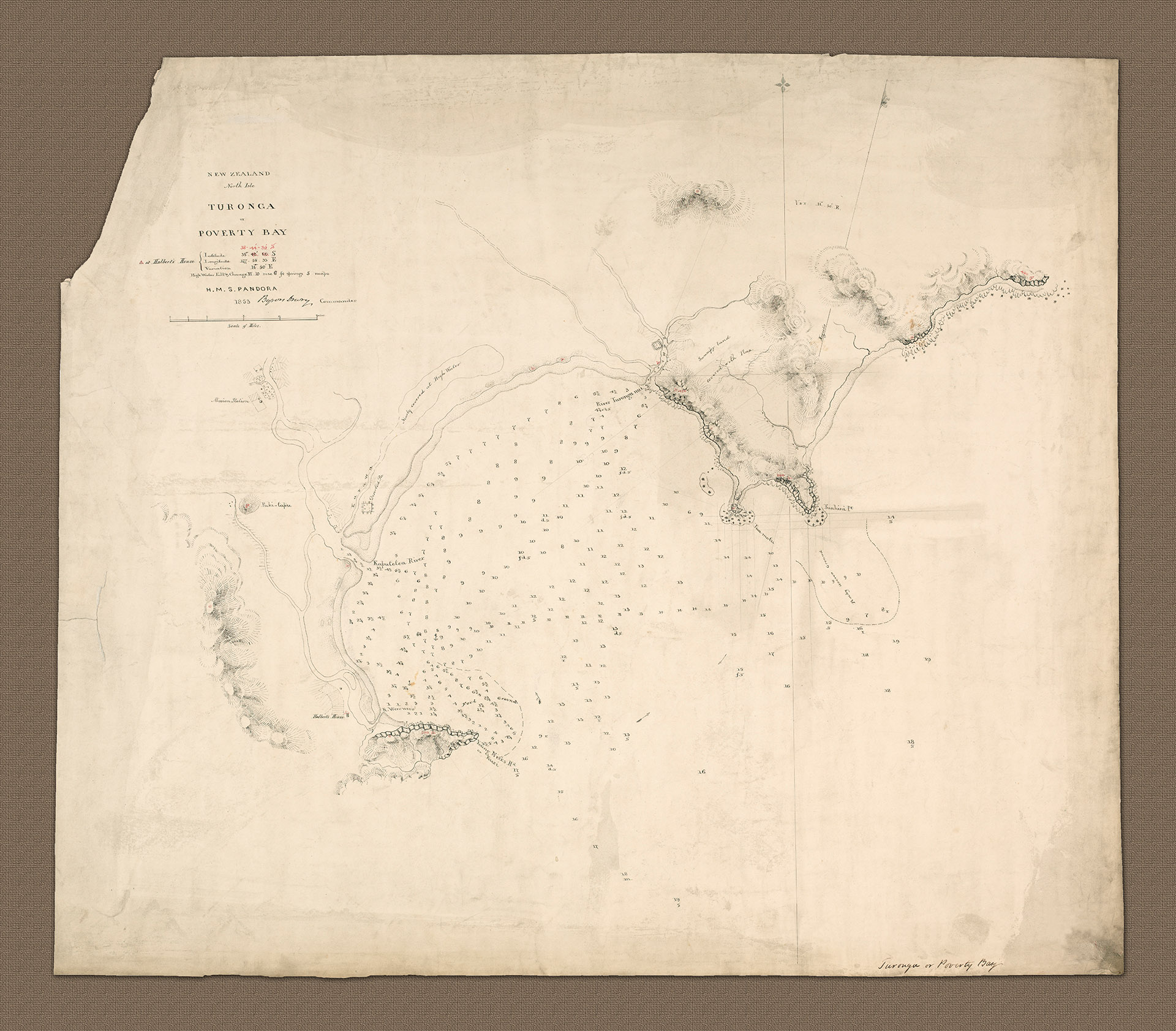NZ103 - A Chart of Poverty Bay, New Zealand
A British survey of the Poverty Bay or Turonga from 1853. This detailed chart of Poverty Bay or 'Turonga' covers the stretch of coastline from the cliffs and highland above what is now Makorori Beach, just to the North, down to Young Nicks Head at the southern most entrance to the Poverty Bay, or Tūranganui-ā-kiwa as is it's native name.
- 1853
- Commander Byron Drury
- h28" x w32"
- L
Scale, longitude (along with a correction and magnetic variation) and latitude are shown on the chart. The chart offers clear indication of highlands, with height in feet on many peeks. other geographic information included are rivers, sandbanks, a Mission station, a village, both a deserted 'Pa' (fortified village) and one on the River Turongra Nui which was in use. Swamp and land covered with lush green vegetation are also shown.
When Lieutenant James Cook first entered the Bay of Plenty on the 8th of October 1769, 82 years previously, he made this entry in his daily journal; 'We saw in the Bay several Canoes, People upon the shore and some houses in the country. The land on the Sea-Coast is high with steep clifts and back inland are very high mountains the face of the Country is of a hilly surface and appears to be clothed with wood and Verdure (lush green vegetation)'.
It is clear that the region had moved-on in the intervening years with the settlement of Foreigners and Missionaries. Indeed one of the most prominent markings on the survey is 'Halbert's House on the southern shore, above the River Werewero. Thomas Halbert (known as Tame Poto or Tommy Short by the Maori) arrived in New Zealand in 1831 and quickly established himself in the whaling, farming and trading. He is renown for marrying six women, all daughters of prominent natives, which gave him connections to trade with three of the most prominent tribes on the East coast. It is perhaps no surprise that he gained the nickname Henry VIIIth!
Halbert's death in 1865, a few years after this survey was made, came when after a drinking session with friends aboard a schooner anchored in the Taruheru River (shown as 'River Turonga' on chart). His boat capsized in the shallow river and he got stuck in the deep silt, drowning as the tide came-in. He is buried in the old Makaraka cemetery in modern day Gisborne.
Many of the names James Cook gave to places and landmarks are evident on this survey by Commander Byron Drury. Amongst them is 'Young Nick's Head (Maori: Te Kuri o Pāoa) which is entered into Cook's journal for that day(11th October) as the Endeavor departed the Bay; '...At Noon the SW Point of Poverty Bay / which I have named 'Young Nicks Head' after the Boy who first saw this land'.
The man responsible for this charming survey is Commander Byron Drury of H.M.S. Pandora who took-in Poverty Bay as part of a large survey mission which included part of the coast of Australia. His work on the New Zealand leg of this voyage led to the publication of the New Zealand Pilot in 1875. The town of Drury in Auckland is names after him.
- A Chart of Poverty Bay, New Zealand


